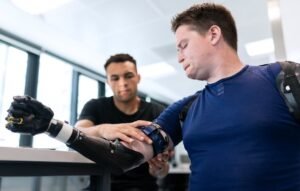Learn AI Using Python
Artificial Intelligence (AI) has become an integral part of the technological landscape, driving innovation in various industries. Python, a popular programming language, provides a versatile and accessible platform to learn and implement AI algorithms. In this article, we will explore how you can use Python to get started with AI programming.
Key Takeaways:
- Python is an ideal language for learning AI due to its simplicity and extensive library support.
- Understanding key AI concepts like machine learning, neural networks, and natural language processing is crucial.
- Utilizing Python libraries such as TensorFlow and scikit-learn can greatly simplify AI development.
Python’s simplicity and readability make it an ideal language for beginners to learn AI. With Python’s intuitive syntax and clean code structure, understanding and implementing complex AI algorithms becomes straightforward. Whether you are new to programming or an experienced developer, Python’s user-friendly approach allows you to quickly grasp and apply AI concepts.
One interesting aspect of using Python in AI programming is its extensive library support. Libraries such as TensorFlow, Keras, and scikit-learn provide powerful tools to build AI models with ease. These libraries implement advanced algorithms and make them accessible through user-friendly APIs, enabling users to focus on problem-solving rather than implementation details. Python’s rich ecosystem of libraries ensures that you can find the right tools for your AI projects.
Machine learning is a fundamental concept in AI, and Python offers excellent support for it. With libraries like scikit-learn, you can perform various tasks, such as regression, classification, and clustering, with just a few lines of code. Python’s simplicity allows beginners to quickly understand and experiment with different machine learning algorithms, enabling them to develop AI models for a wide range of applications.
| Library | Features | Popularity |
|---|---|---|
| TensorFlow | Deep learning, neural networks | High |
| Keras | Easy model building, neural networks | High |
| scikit-learn | Machine learning algorithms, data preprocessing | High |
- Neural networks lie at the core of many AI applications, and Python offers frameworks like TensorFlow and Keras for building and training them. These frameworks provide high-level abstractions and pre-built components that greatly simplify the development of neural networks.
- Python’s natural language processing (NLP) libraries, such as NLTK and spaCy, offer powerful tools for understanding and manipulating human language. These libraries enable AI systems to process and analyze text, enabling applications such as sentiment analysis, language translation, and chatbots.
| Library | Features | Popularity |
|---|---|---|
| NLTK | Tokenization, stemming, part-of-speech tagging | High |
| spaCy | Named entity recognition, dependency parsing | High |
Python’s AI capabilities extend beyond just machine learning and neural networks. It allows you to handle various AI-related tasks, such as data preprocessing, feature extraction, and model evaluation, efficiently. By leveraging the power of Python libraries, you can build robust and scalable AI systems.
With Python, your AI journey begins with a simple and powerful programming language. Its versatility and extensive library support make it an excellent choice for both beginners and experienced developers. So why wait? Start your AI learning journey with Python today.
Remember, in the AI realm, you are only limited by your imagination.

Common Misconceptions
AI is Only for Computer Science Experts
One common misconception about learning AI using Python is that it is only for computer science experts or individuals with a strong programming background. However, this is far from the truth. While having prior coding experience can be beneficial, anyone with a basic understanding of Python can learn AI.
- AI learning resources are available even for beginners with no coding background.
- Python libraries such as scikit-learn provide high-level abstractions for AI tasks, making it accessible to non-experts.
- Many online courses and tutorials offer step-by-step guidance for learning AI using Python from scratch.
AI Development Requires Expensive Hardware
Another misconception surrounding AI development using Python is that it necessitates expensive hardware. While powerful hardware can speed up the training process for complex AI models, it is not a strict requirement. Python’s extensive ecosystem of libraries and frameworks allows users to develop AI on modest hardware configurations.
- Cloud-based platforms like Google Colab provide free access to high-performance GPUs for AI development.
- Python libraries such as TensorFlow and PyTorch offer GPU acceleration capabilities to leverage available hardware resources effectively.
- Many AI algorithms can be trained on smaller datasets and lower-resolution images, reducing the hardware requirements.
AI Will Replace Human Workers Completely
One significant misconception about AI is the fear that it will replace human workers across all industries, leading to high unemployment rates. While AI does automate certain tasks, it does not completely replace human workers. Instead, it augments human capabilities and helps streamline processes.
- AI enables workers to focus on high-value tasks that require critical thinking and creativity.
- Human judgment is still crucial in decision-making processes, ensuring accountability and ethical considerations.
- AI technology requires continuous human involvement in training, monitoring, and adapting to changing environments.
AI Can Think and Learn Like Humans
Many people believe that AI can think and learn like humans, resulting in the fear of AI surpassing human intelligence and becoming a threat. While AI has achieved remarkable capabilities in certain areas, such as image and speech recognition, it operates on fundamentally different principles from human thinking and learning.
- AI algorithms are based on statistical analysis and mathematical models rather than intuitive human reasoning.
- AI lacks common sense, context, and emotions that humans possess, limiting its ability to understand and interpret the world as comprehensively as humans.
- Training AI models require carefully labeled data, while humans can learn from raw and unstructured information.
AI is Only Used in Advanced Technological Applications
Some people believe that AI is only used in advanced technological applications like self-driving cars and sophisticated robots. However, AI has become ubiquitous and is now integrated into many everyday applications that people use without realizing it.
- AI is used in recommendation systems of streaming platforms like Netflix and Spotify, helping users discover personalized content.
- Virtual assistants like Siri and Alexa utilize AI to understand and respond to user commands and queries.
- Fraud detection systems in banking and finance sectors leverage AI algorithms to automatically identify suspicious activities.

Python Libraries for AI
Python offers various libraries that can be used for artificial intelligence (AI) development. The following table provides an overview of some of the most popular ones:
Machine Learning Algorithms
Machine learning algorithms are essential components of AI systems. Here are some widely used ones:
Popular AI Projects
Several AI projects have gained significant attention in recent years. Here are a few examples:
Natural Language Processing (NLP) Libraries
Natural language processing enables computers to understand and analyze human language. The table below highlights some popular NLP libraries:
Deep Learning Frameworks
Deep learning is a subset of machine learning that focuses on neural networks. Here are some popular frameworks used for deep learning:
AI in Healthcare
The application of AI in healthcare has the potential to revolutionize the field. Here are some notable use cases:
AI in Autonomous Vehicles
Autonomous vehicles are a prime example of AI integration in real-world applications. Here are some key players and their projects:
AI in Robotics
AI plays a crucial role in robotics, enabling robots to perform complex tasks. The table below presents examples of AI in robotics:
AI in Finance
Financial institutions are increasingly leveraging AI technologies to optimize their operations. Here are some notable use cases:
AI in Gaming
The gaming industry has embraced AI to enhance user experiences and create realistic simulations. Here are some examples of AI in gaming:
Artificial intelligence, powered by Python, has revolutionized various industries. From healthcare to finance, autonomous vehicles to gaming, the applications of AI are vast and ever-expanding. By leveraging Python libraries, machine learning algorithms, and deep learning frameworks, developers can unlock the potential of AI and drive innovation. As AI continues to evolve, its impact on society and everyday life is becoming increasingly apparent.
Frequently Asked Questions
1. What is AI?
AI, short for Artificial Intelligence, is a branch of computer science that enables machines to mimic human intelligence and perform tasks such as speech recognition, decision-making, problem-solving, and learning.
2. What is Python?
Python is a popular programming language widely used in AI development. It is known for its simplicity and readability, making it one of the preferred languages for beginners.
3. How can I learn AI using Python?
To learn AI using Python, you can start by understanding the basics of Python programming language. Once you have a solid foundation, you can dive into AI concepts such as machine learning, deep learning, and natural language processing using various Python libraries and frameworks.
4. What are some popular Python libraries for AI?
There are several popular Python libraries for AI, including TensorFlow, Keras, PyTorch, Scikit-learn, and NLTK. These libraries provide ready-to-use functions and algorithms for tasks such as machine learning, neural networks, and data processing.
5. Do I need prior programming experience to learn AI with Python?
While prior programming experience can be beneficial, it is not a requirement to learn AI with Python. The Python language is beginner-friendly, and there are plenty of resources available online for beginners to get started.
6. Is AI with Python suitable for beginners?
Yes, AI with Python is suitable for beginners. Python’s simplicity and readability make it an ideal programming language for beginners who want to understand AI concepts and develop their skills in machine learning and data analysis.
7. Can I build real-world AI applications using Python?
Absolutely! Python is widely used for building real-world AI applications across various industries and domains. Whether it’s developing chatbots, image recognition systems, recommendation engines, or autonomous vehicles, Python provides the flexibility and tools to bring your AI ideas to life.
8. Where can I find resources to learn AI with Python?
There are numerous resources available online to learn AI with Python. You can find tutorials, online courses, books, and documentation on websites like Coursera, edX, Udemy, and official documentation for Python libraries like TensorFlow and PyTorch.
9. Can I contribute to the AI community using Python?
Definitely! The AI community is always in need of new ideas, research, and contributions. By learning AI with Python, you can actively participate in open-source projects, share your own AI models, collaborate with other researchers, and contribute to the advancement of artificial intelligence.
10. What are some future prospects for AI with Python?
The future of AI with Python looks promising. AI technology is continuously evolving and finding applications in various fields, including healthcare, finance, robotics, and more. Learning AI with Python can open up exciting career opportunities in AI research, data science, and AI engineering.




